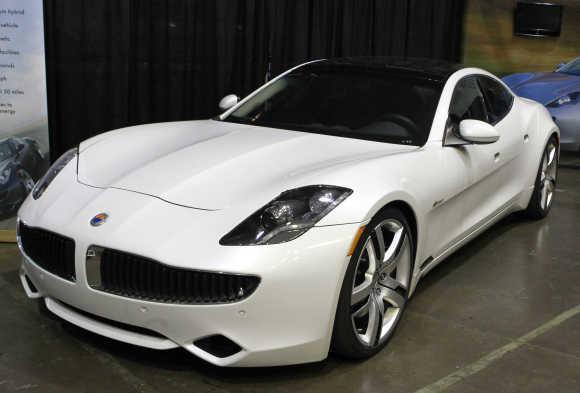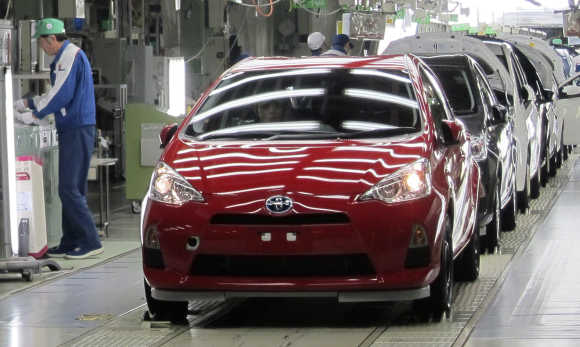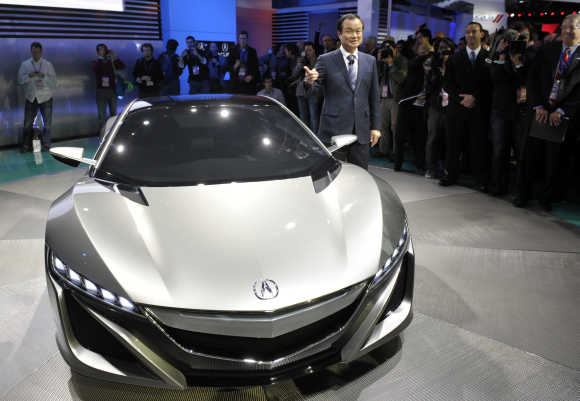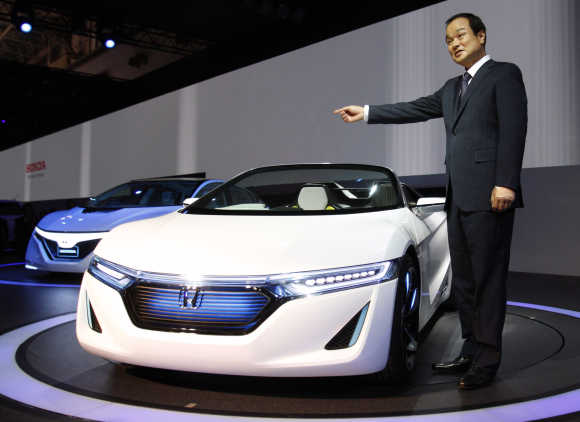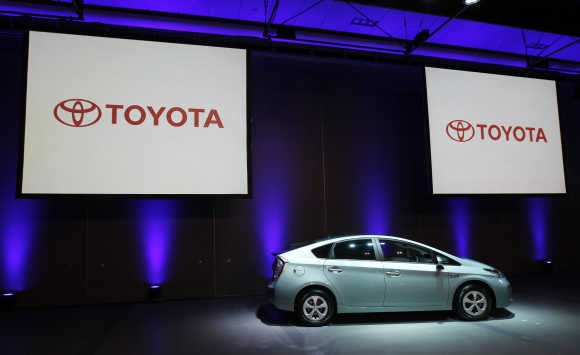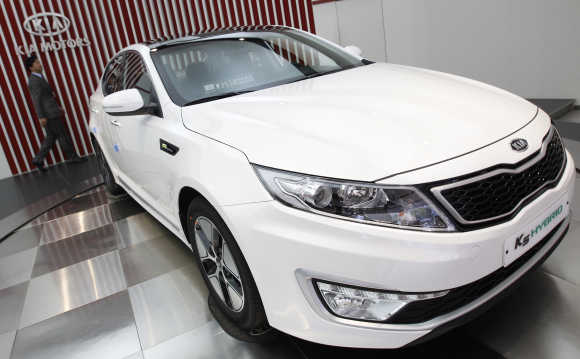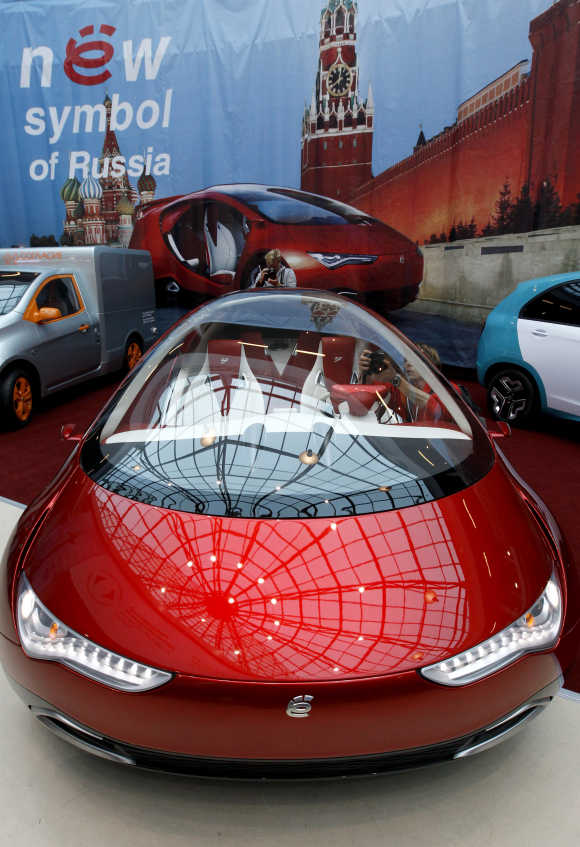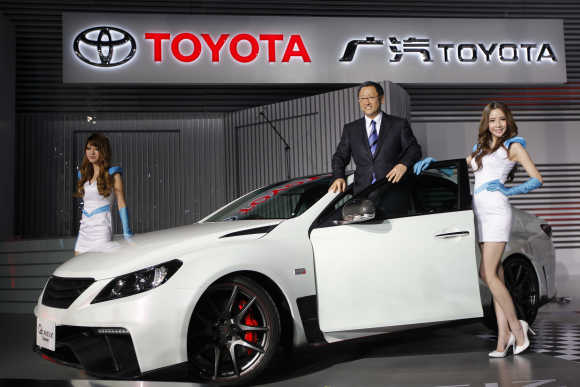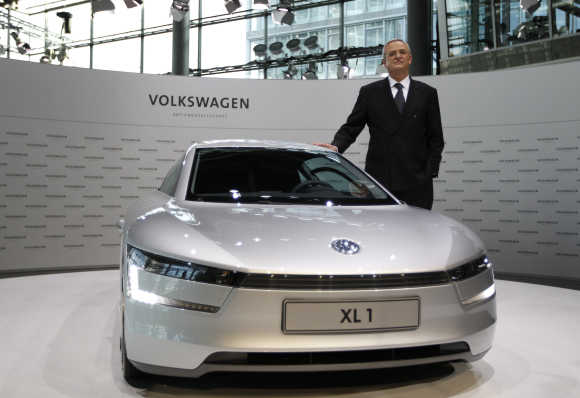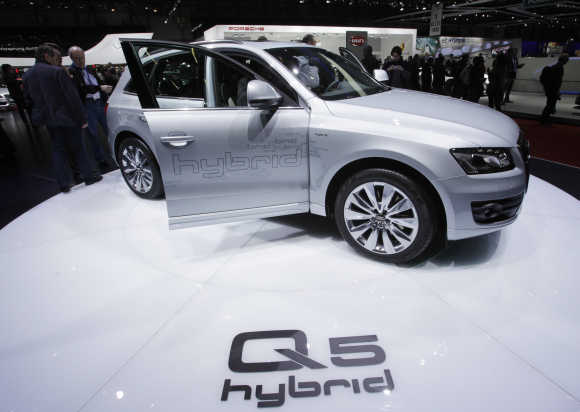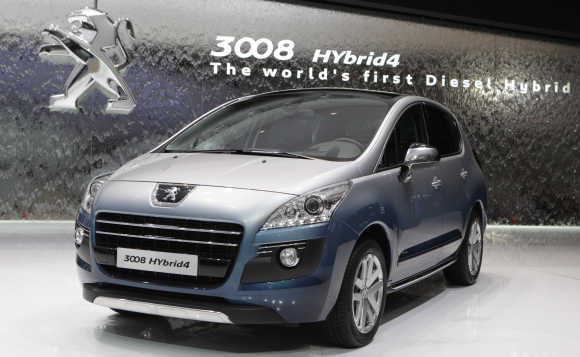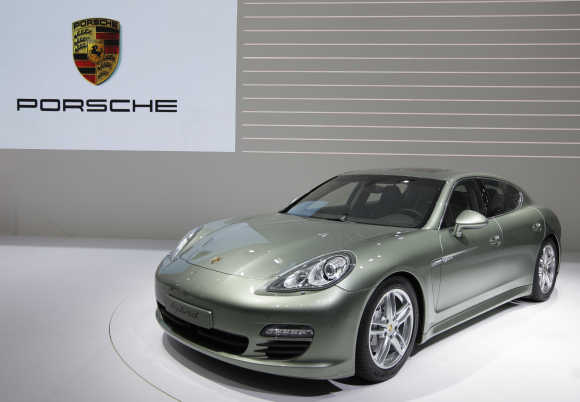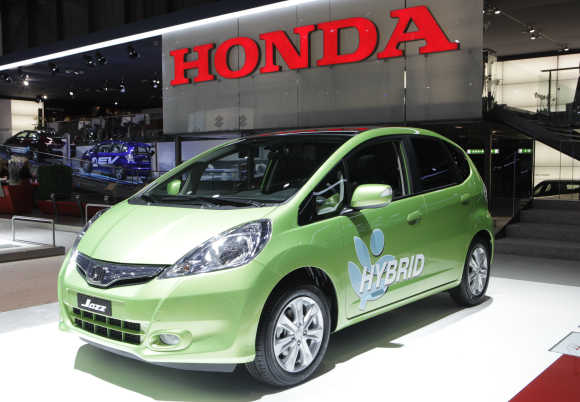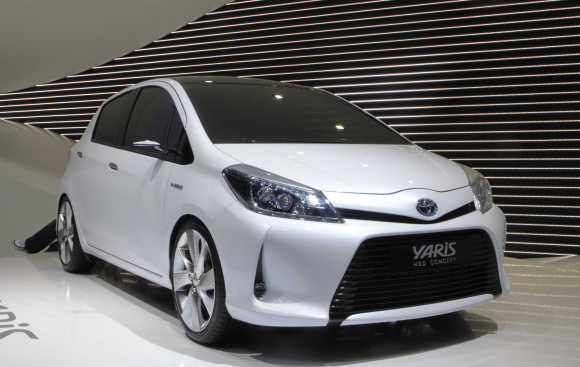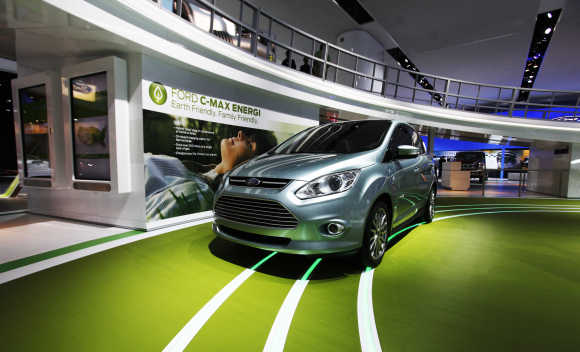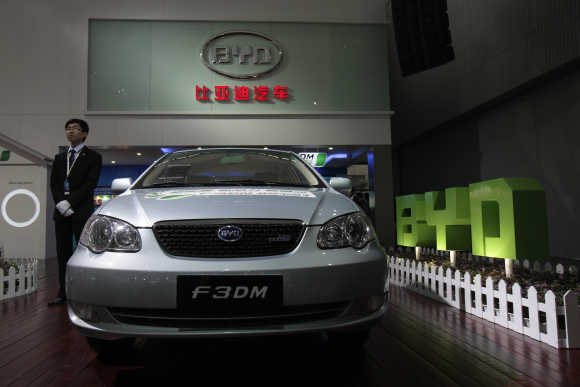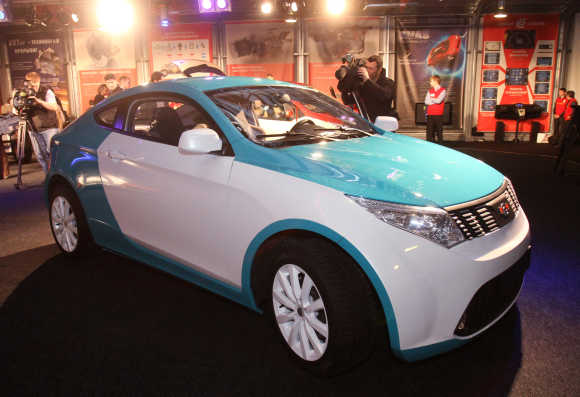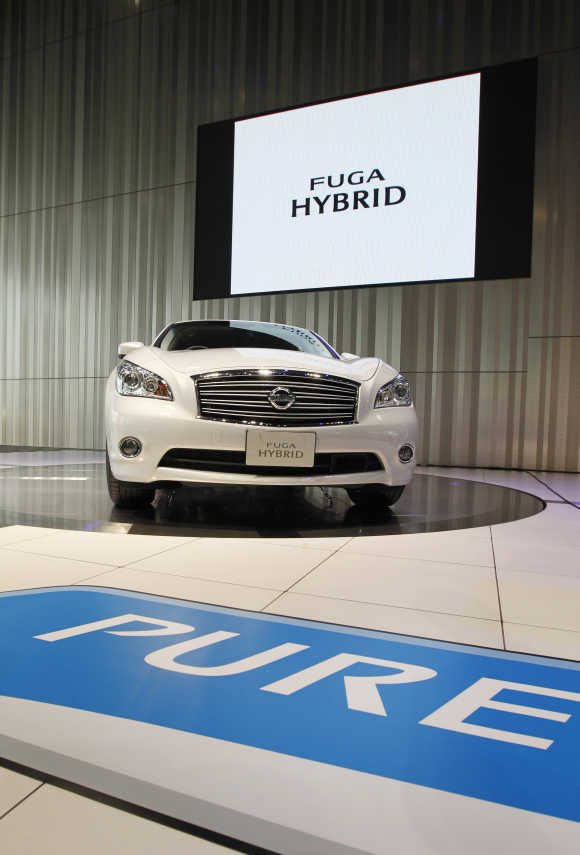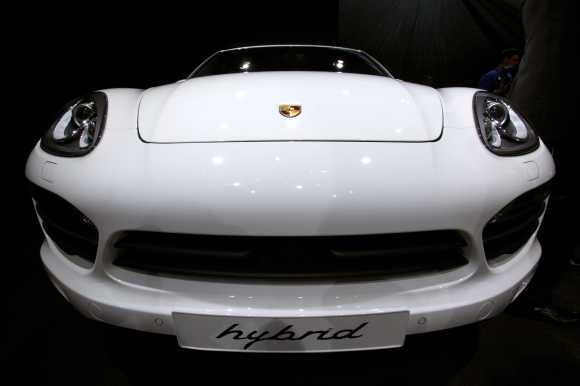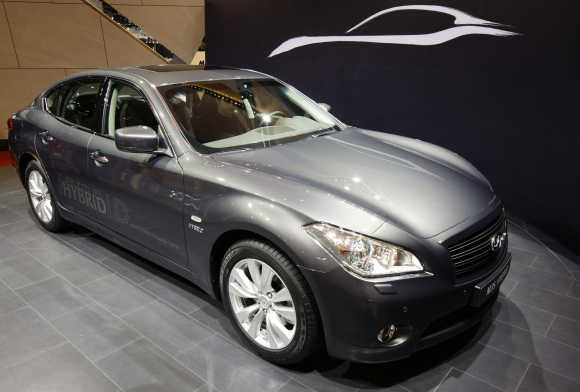 | « Back to article | Print this article |
Most beautiful hybrid cars in the world
A hybrid electric vehicle combines a conventional internal combustion engine propulsion system with an electric propulsion system.
The presence of the electric powertrain is intended to achieve either better fuel economy than a conventional vehicle, or better performance.
There are a variety of HEV types, and the degree to which they function as EVs varies as well. The most common form of HEV is the hybrid electric car.
Let's take a look at some of the most beautiful hybrid cars in the world.
Click NEXT to read more...
Most beautiful hybrid cars in the world
Automotive hybrid technology became widespread beginning in the late 1990s. The first mass-produced hybrid vehicle was the Toyota Prius, launched in Japan in 1997, and followed by the Honda Insight, launched in 1999 in the United States and Japan.
Click NEXT to read more...
Most beautiful hybrid cars in the world
The Prius was launched in Europe, North America and the rest of the world in 2000. Toyota launched a second generation Prius in 2004 and a third in 2009.
The 2010 Prius has an estimated US Environmental Protection Agency combined fuel economy cycle of 50 miles per US gallon (4.7 L/100 km).
Click NEXT to read more...
Most beautiful hybrid cars in the world
More than 4.5 million hybrid electric vehicles have been sold worldwide by the end of December 2011, led by Toyota Motor Company with more than 3.5 million Lexus and Toyota hybrids, followed by Honda Motor Co, Ltd. with cumulative sales of more than 800 thousand hybrids, and Ford Motor Corporation with more than 185 thousand hybrids sold in the United States by December 2011.
Click NEXT to read more...
Most beautiful hybrid cars in the world
Toyota is the market leader with hybrids sold in 80 countries and regions. Worldwide sales of hybrid vehicles produced by it reached 1.0 million units in May 2007; 2.0 million in August 2009; and the 4.0 million mark in April 2012.
Click NEXT to read more...
Most beautiful hybrid cars in the world
Worldwide hybrid sales are led by the Toyota Prius, with cumulative sales of 2.6 million units sold through April 2012, and available in 70 countries and regions.
Click NEXT to read more...
Most beautiful hybrid cars in the world
The United States is the world's largest hybrid market with 2.3 million automobiles and SUVs sold through April 2012 and California is the biggest regional American market.
Click NEXT to read more...
Most beautiful hybrid cars in the world
Hybrid vehicles can be initially more expensive (the so-called "hybrid premium") than pure fossil-fuel-based ICE vehicles, due to extra batteries, more electronics and in some cases other design considerations (although battery renting can be used to reach the cost parity).
Click NEXT to read more...
Most beautiful hybrid cars in the world
The trade-off between higher initial cost (also called showroom costs) and lower fuel costs (difference often referred to as the payback period) is dependent on usage - miles travelled, or hours of operation, fuel costs, and in some cases, government subsidies.
Click NEXT to read more...
Most beautiful hybrid cars in the world
Traditional economy vehicles may result in a lower direct cost for many users (before consideration of any externality).
Click NEXT to read more...
Most beautiful hybrid cars in the world
In order to encourage the purchase of hybdrid electric vehicles, several countries have introduced legislation for incentives and ecotaxes.
Click NEXT to read more...
Most beautiful hybrid cars in the world
Residents of Ontario and Quebec in Canada can claim a rebate on the Provincial Retail Sales Tax of up to C$2,000 on the purchase or lease of a hybrid electric vehicle.
Click NEXT to read more...
Most beautiful hybrid cars in the world
Residents in British Columbia are eligible for a 100 per cent reduction of sales tax up to a maximum of C$2,000 if the hybrid electric vehicle is purchased or leased before April 1, 2011.
Click NEXT to read more...
Most beautiful hybrid cars in the world
In Jordan, a full import customs and sales tax reduced for all hybrid vehicles from 80 per cent to 60 per cent of the vehicle list price based on the engine size.
Click NEXT to read more...
Most beautiful hybrid cars in the world
In the Netherlands, the vehicle registration tax, payable when a car is sold to its first buyer, can earn the owner of an HEV a discount up to 6,000 euros.
Click NEXT to read more...
Most beautiful hybrid cars in the world
In Christchurch, New Zealand, hybrid vehicles are entitled to an hour free parking in city council parking buildings. Where those buildings already provide an hour free, hybrid vehicles are entitled to an extra hour free.
Click NEXT to read more...
Most beautiful hybrid cars in the world
In the Republic of Ireland, a discount of up to 1,500 euros on VRT for hybrids, and up to 2,500 euros for plug-in hybrids is available until December 2012.
Previously there was a potential reduction of 50 per cent of VRT applicable before July 2008, when VRT rates were based on engine size, rather than the current CO2 emissions system.
Click NEXT to read more...
Most beautiful hybrid cars in the world
In Sweden there is an "Eco car" subsidy to private car owners. For fringe benefit cars there is a reduction of the benefit tax of 40 per cent for electric vehicles and hybrid electric vehicles and 20 per cent for other "Eco cars".
Click NEXT to read more...
Most beautiful hybrid cars in the world
Drivers of HEVs in the United Kingdom benefit from the lowest band of vehicle excise duty (car tax), which is based on carbon dioxide emissions.
In central London, these vehicles are also exempt from the London congestion charge. Due to their low levels of regulated emissions, the greenest cars are eligible for 100 per cent discount under the current system.
Click NEXT to read more...
Most beautiful hybrid cars in the world
Full hybrid, sometimes also called a strong hybrid, is a vehicle that can run on just the engine, just the batteries, or a combination of both.
Ford's hybrid system, Toyota's Hybrid Synergy Drive and General Motors/Chrysler's Two-Mode Hybrid technologies are full hybrid systems.
Click NEXT to read more...
Most beautiful hybrid cars in the world
The Toyota Prius, Ford Escape Hybrid, and Ford Fusion Hybrid are examples of full hybrids, as these cars can be moved forward on battery power alone.
Click NEXT to read more...
Most beautiful hybrid cars in the world
A large, high-capacity battery pack is needed for battery-only operation. These vehicles have a split power path allowing greater flexibility in the drivetrain by interconverting mechanical and electrical power, at some cost in complexity.
Click NEXT to read more...
Most beautiful hybrid cars in the world
Mild hybrid, is a vehicle that can not be driven solely on its electric motor, because the electric motor does not have enough power to propel the vehicle on its own.
Mild hybrids only include some of the features found in hybrid technology, and usually achieve limited fuel consumption savings, up to 15 per cent in urban driving and eight to 10 per cent overall cycle.
Click NEXT to read more...
Most beautiful hybrid cars in the world
A mild hybrid is essentially a conventional vehicle with oversize starter motor, allowing the engine to be turned off whenever the car is coasting, braking, or stopped, yet restart quickly and cleanly.
Click NEXT to read more...
Most beautiful hybrid cars in the world
The motor is often mounted between the engine and transmission, taking the place of the torque converter, and is used to supply additional propulsion energy when accelerating.
Accessories can continue to run on electrical power while the gasoline engine is off, and as in other hybrid designs, the motor is used for regenerative braking to recapture energy.
Click NEXT to read more...
Most beautiful hybrid cars in the world
As compared to full hybrids, mild hybrids have smaller batteries and a smaller, weaker motor/generator, which allows manufacturers to reduce cost and weight.
Click NEXT to read more...
Most beautiful hybrid cars in the world
Honda's early hybrids including the first generation Insight used this design, leveraging their reputation for design of small, efficient gasoline engines; their system is dubbed Integrated Motor Assist.
Click NEXT to read more...
Most beautiful hybrid cars in the world
Starting with the 2006 Civic Hybrid, the IMA system now can propel the vehicle solely on electric power during medium speed cruising.
Click NEXT to read more...
Most beautiful hybrid cars in the world
A plug-in hybrid electric vehicle, also known as a plug-in hybrid, is a hybrid electric vehicle with rechargeable batteries that can be restored to full charge by connecting a plug to an external electric powersource.
Click NEXT to read more...
Most beautiful hybrid cars in the world
A plug-in hybrid electric vehicle shares the characteristics of both a conventional hybrid electric vehicle, having an electric motor and an internal combustion engi#8800 and of an all-electric vehicle, also having a plug to connect to the electrical grid.
